Is smartphone addiction a real thing? Here’s what to know about using smartphones in a healthy way and when it might be time to step away from the screen for a bit. For help breaking an unhealthy habit, there’s also a section of tips for reducing phone usage throughout the day. You don't have to ditch smartphones entirely to cut back on the time you spend scrolling, but you can learn to limit yourself.
What Is Smartphone Addiction?
Smartphones have increased connectivity and productivity in a way that’s almost impossible to overstate. However, for some people, there’s definitely the potential for too much of a good thing.
Although exact definitions vary, smartphone addiction can include obsessively checking or using your phone, feeling agitated when away from the phone, and using your phone in a way that interferes with social life or other activities, according to the International Journal of Cognition and Behaviour. It is sometimes connected to an overall addiction to the internet.
In addition, smartphone addiction or overuse is a common issue for many people, so you're hardly alone if browsing takes up more time than you would like. Smartphones provide your brain with a jolt of social stimuli thanks to constant texts and social media notifications, making it difficult to look away, according to Harvard University. It's no wonder so many people have a hard time ignoring their phones for long stretches of time.
The Downsides of Smartphone Addiction
In many cases, smartphone overuse correlates with anxiety, poor sleep quality, and even physical problems with the fingers, neck, back, and shoulders, according to the International Journal of Environmental Research and Public Health. If you've ever stayed up too late browsing your phone, then some of these symptoms may sound familiar.
Plus, spending hours on the phone may leave less time for other hobbies or social activities.
How to Use Your Smartphone Less
If you want to cut back on smartphone use for any reason, then take some steps to wean yourself off of it slowly. Chances are, decreasing your usage bit by bit will be easier than making a sudden, major change to your current smartphone habits.
1. Make Your Phone Less Fun
Make the colorful, irresistible smartphone a bit less interesting. It sounds simple, but reducing the bright, punchy colors instantly makes the phone more boring, and less likely to catch your attention. Apps, websites, and even texts lose some of their appeal.
To start, set its screen to grayscale. On Android phones, enable developer mode before selecting the Monochromacy option under the Simulate Color Space settings. A YouTube video by Trent B1 covers all the steps in detail.
To enable grayscale on an iPhone, go to Settings, then Accessibility. Select Display & Text Size, and lastly Color Filters. Choose Grayscale, and watch the colors on your phone fade away.
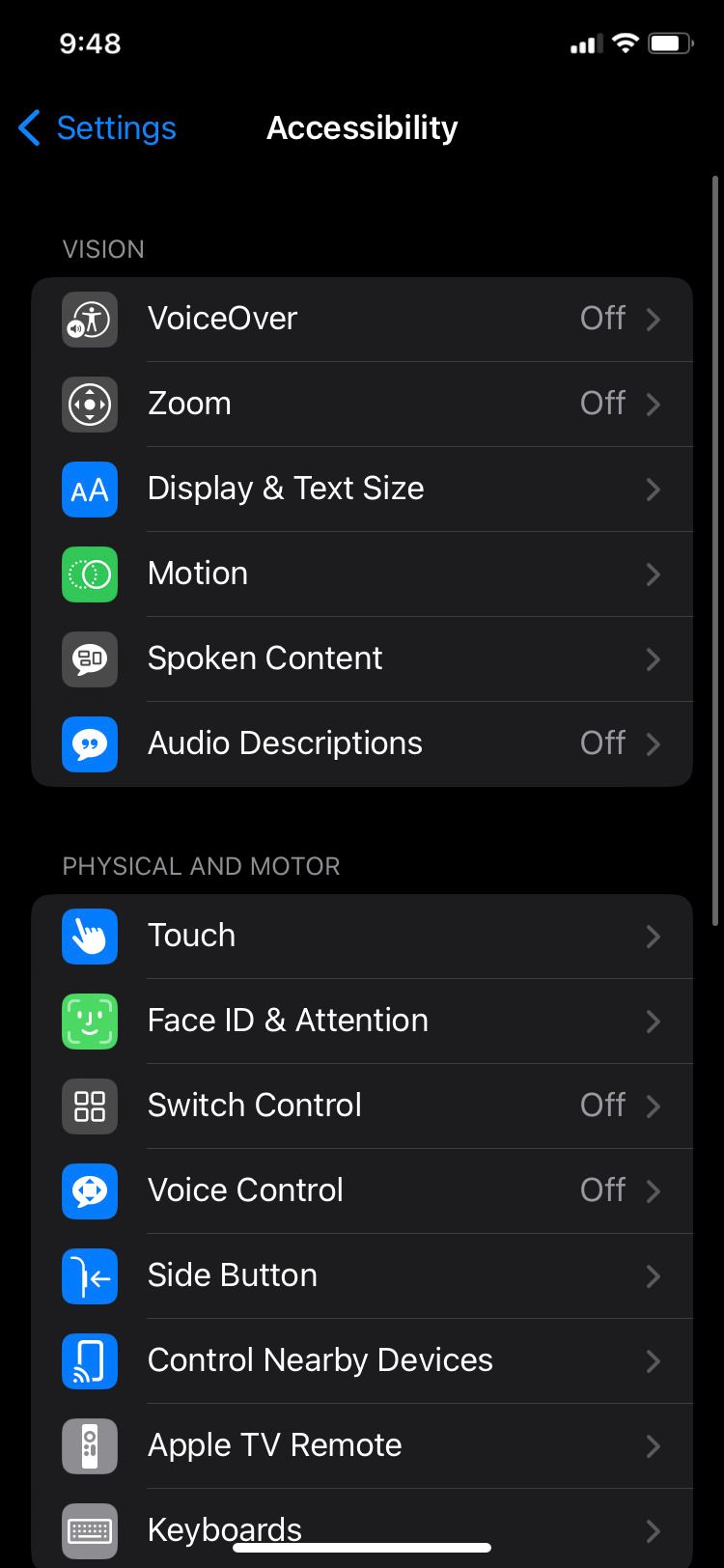
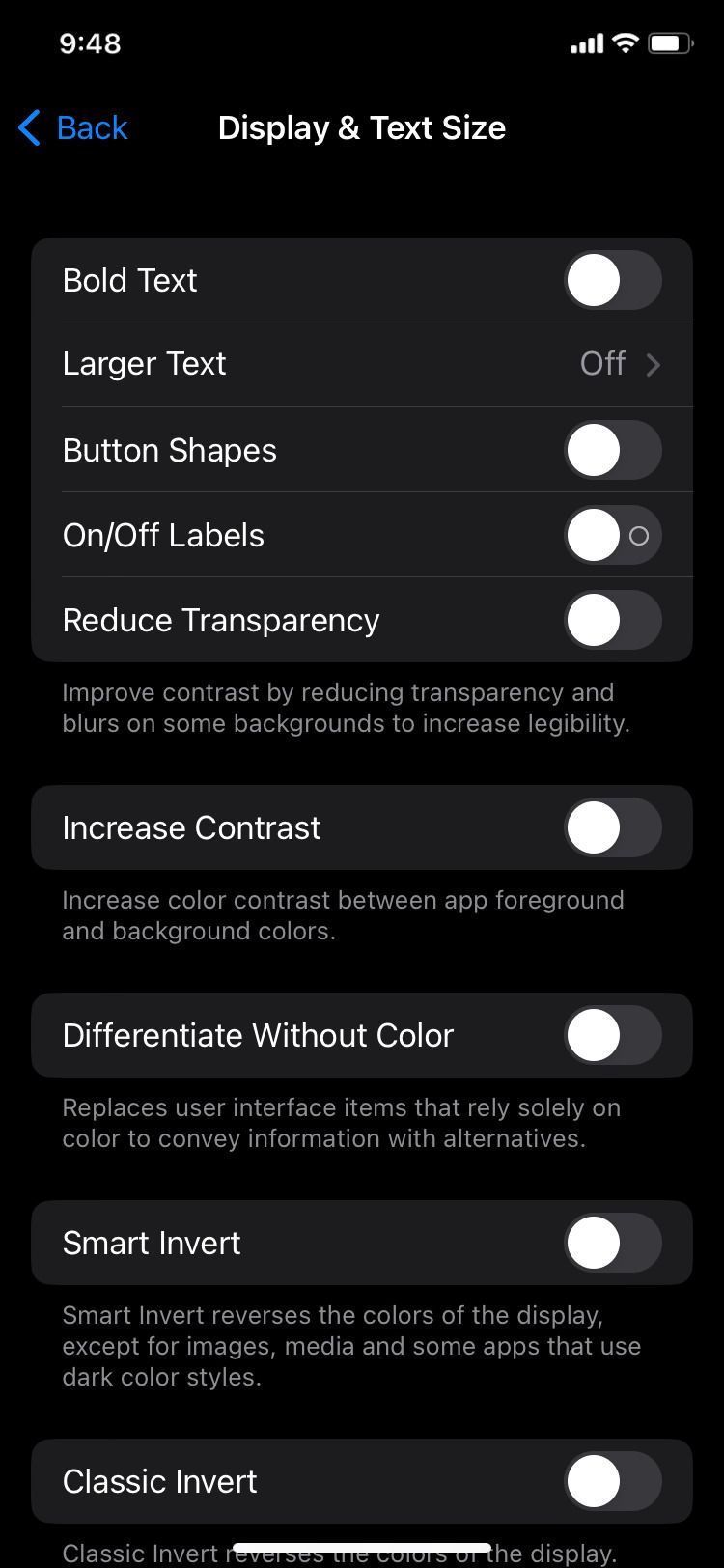
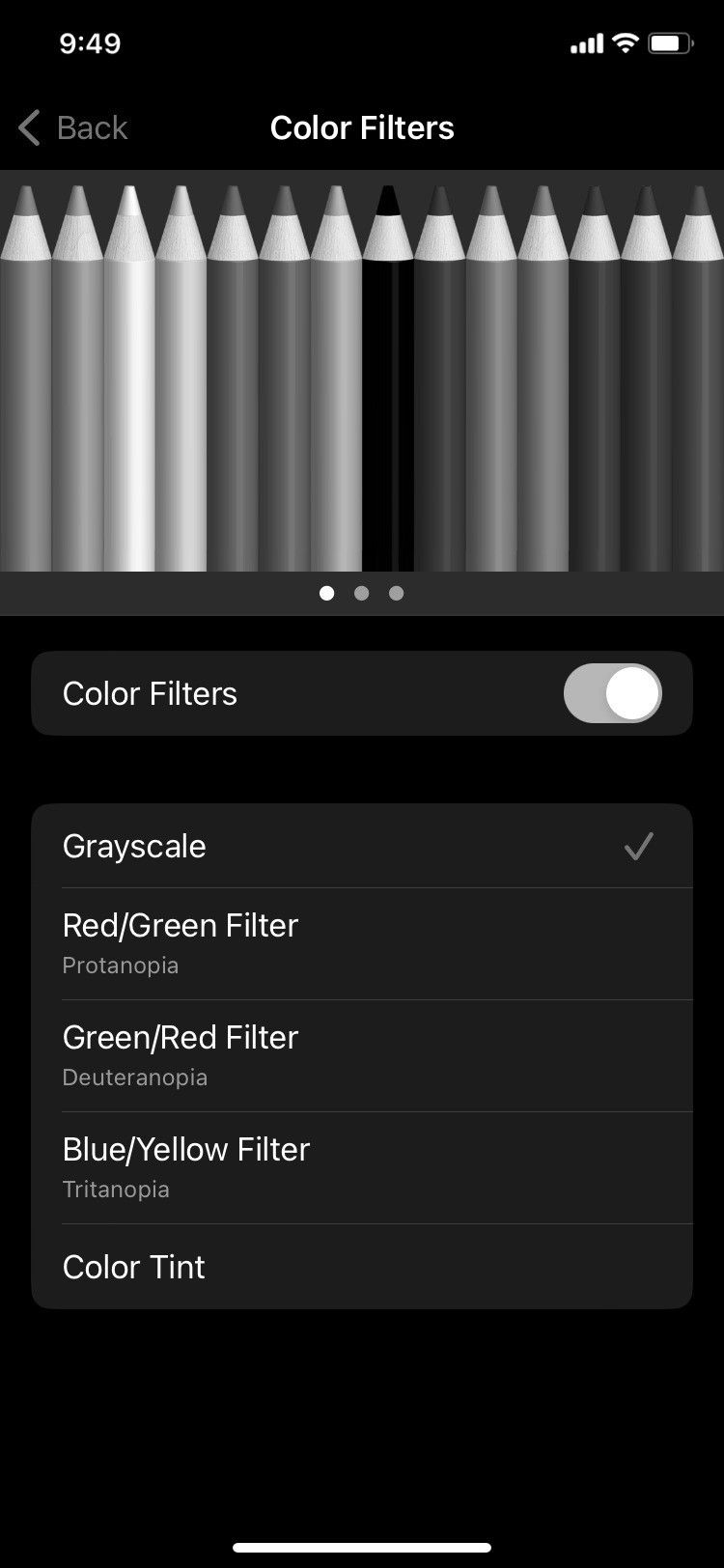
Next, disable notifications to help reduce distractions. Whether you want to stop notifications for your Android phone or control your iPhone's notifications, reducing them will help make the phone a bit less interesting.
Worried about missing calls or messages? Dedicate specific times of the day to catch up on texts and return calls. By responding to messages in set batches, you can maintain focus for longer stretches while staying in touch with contacts.
2. Monitor Your Screen Time
Set goals for the amount of time you want to spend on the phone each day, and stick with it. Somewhat counterintuitively, downloading an app designed to monitor screen time can be helpful here.
The OffScreen app helps limit screen time use overall. Choose the maximum amount of time to spend on the phone each day at setup. In addition, the OffScreen app monitors your motion to help prevent phone use while walking. It also gives you the chance to block certain apps during particular parts of the day to improve focus.
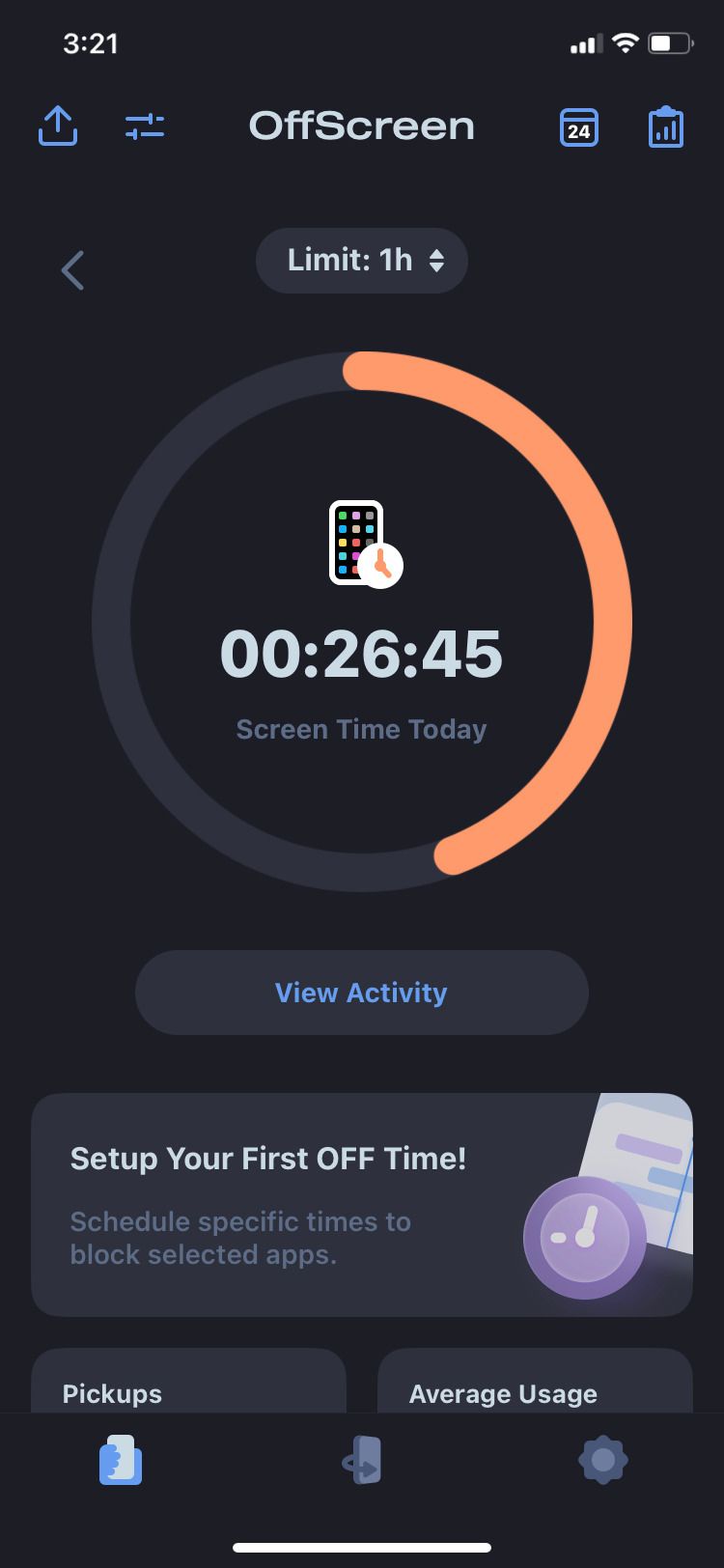
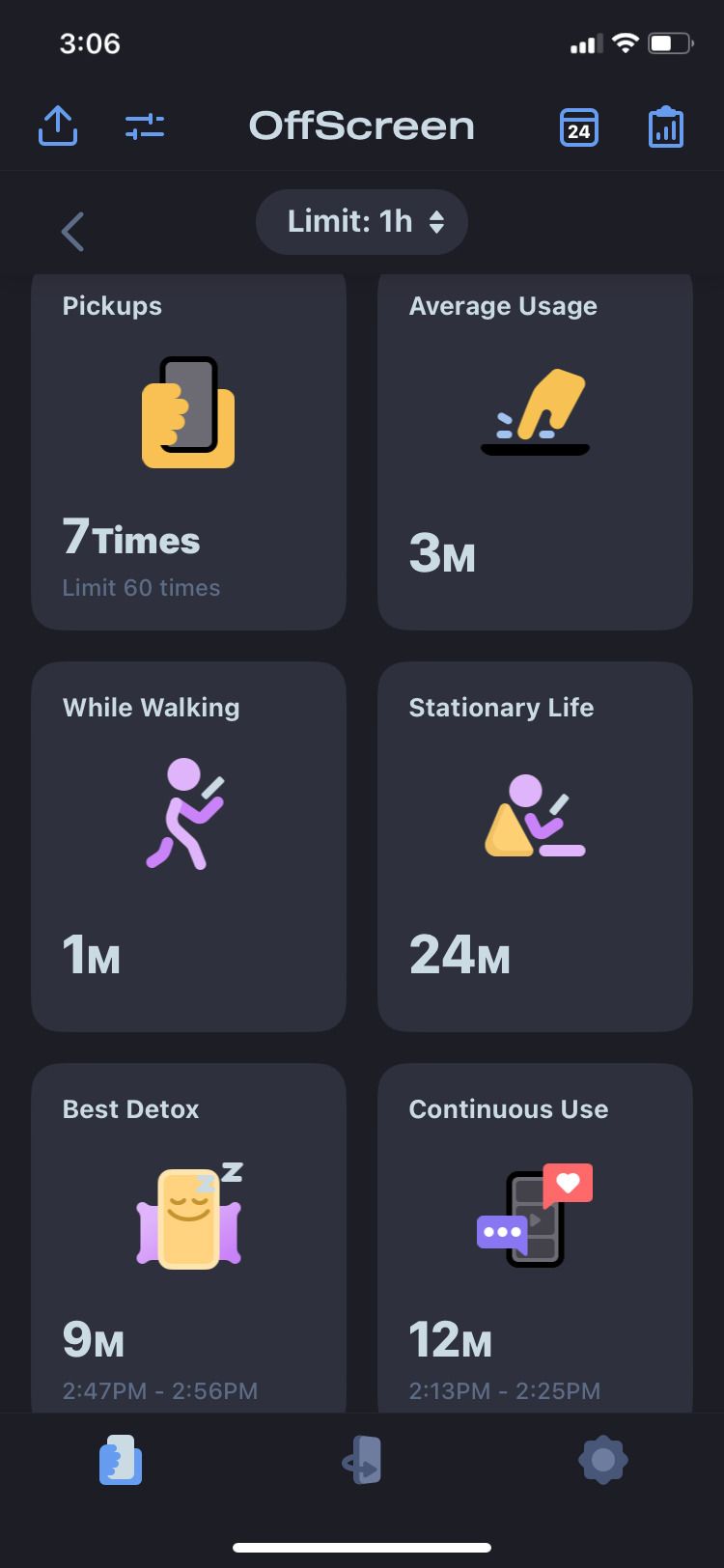
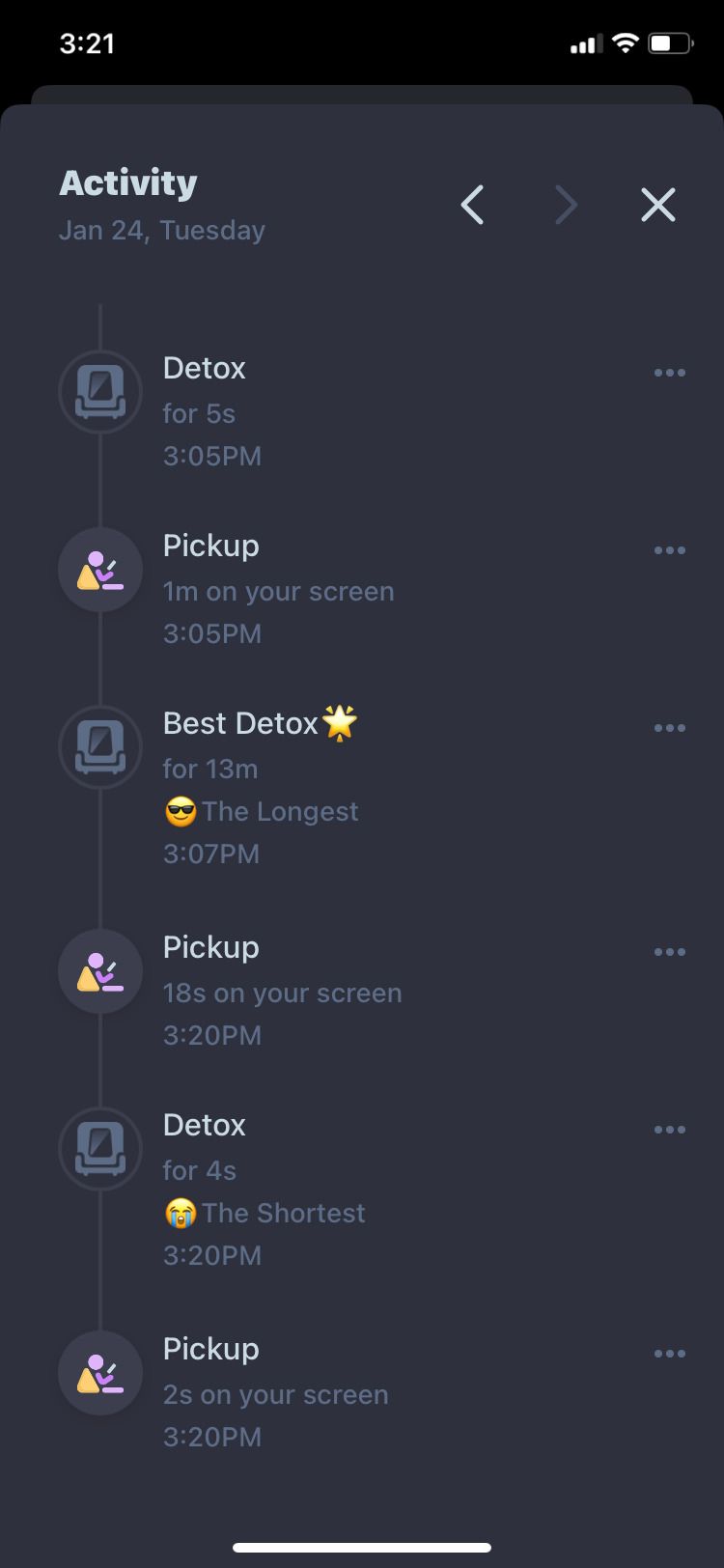
A progress screen tracks your phone use over time, and it notes exactly how long you go without touching the phone over the course of a day.
Download: OffScreen: Screen Time Control App for iOS | Android (Subscription required, free trial available)
3. Be Mindful of Your Pickups
It can be so easy to play with the phone whenever there’s a lag in your day (and chances are, almost everyone around you is on a phone, too). Find ways to reward yourself for leaving the phone alone to keep this common habit in check.
Using the Forest app rewards you for ignoring the phone for set amounts of time, for instance. Stay focused during set work sessions to grow a virtual forest filled with an amazing variety of trees.
In addition, check screen time on Android in the Digital Wellbeing screen, which displays the number of times you unlock the phone. On an iPhone, review the number of pickups on the Apple Screen Time feature. Keeping track of pickups, and gradually learning to fiddle around with the phone less often, will result in less screen use overall.
4. Keep Your Phone Away From Bed
It’s so tempting to keep scrolling long into the night. However, playing around on the phone at bedtime is often associated with poorer sleep quality, and experts often recommend keeping smartphones out of the bedroom entirely, according to Personal and Ubiquitous Computing. For many people, the temptation to check the phone at all hours of the night is difficult to ignore.
Break the habit by leaving the phone in another room and using a smart alarm clock (or a traditional alarm clock) instead. It may take a little adjustment time, so experiment with the best way to stash your phone. You may want to keep it in an adjacent room to hear in case any late-night calls come in, for instance. Other people might prefer to keep it off entirely.
Use Your Smartphone Mindfully and Stop Scrolling So Much
To spend less time on the phone each day, using time monitoring apps, reducing notifications, and keeping the phone away from your bed can all help reduce overall usage. Whether you want to overcome a smartphone addiction or simply increase screen-free time, using the phone in a more deliberate way can help avoid overuse.

